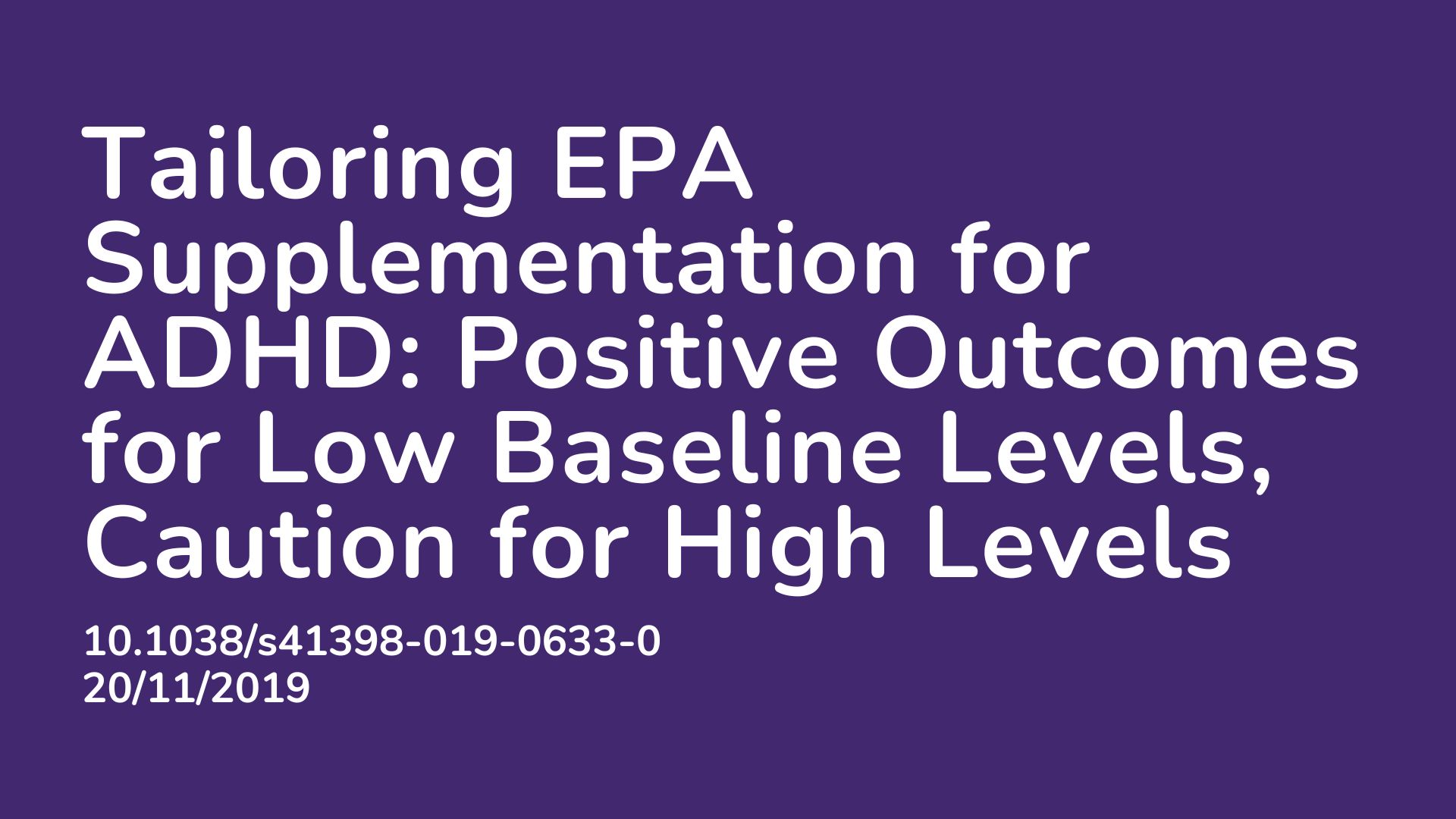Summary:
A deficiency in omega-3 polyunsaturated fatty acids, including eicosapentaenoic acid (EPA) and docosahexaenoic acid (DHA), may contribute to attention deficit hyperactivity disorder (ADHD) since these essential fatty acids are crucial for brain function and cognitive performance. Recent studies have shown that individuals with ADHD often have lower levels of DHA, EPA, and total omega-3 fatty acids, and deficiencies in these nutrients are linked to more severe ADHD symptoms. No studies have yet examined how omega-3 fatty acid levels influence ADHD symptoms or the effectiveness of omega-3s as a treatment. This paper presents a 12-week, double-blind, placebo-controlled trial involving 92 adolescents aged 6-18 with ADHD, comparing high-dose EPA (1.2 g) to a placebo. Baseline EPA and DHA levels were measured before and after treatment to evaluate how baseline EPA levels affect treatment response and how EPA treatment alters overall EPA levels. Secondary measures included ADHD symptoms, emotional symptoms, and plasma levels of high-sensitivity C-reactive protein (hs-CRP) and brain-derived neurotrophic factor (BDNF), which serve as inflammatory markers. The results showed that EPA treatment improved attention more than placebo, with participants having the lowest baseline EPA levels showing the greatest symptom improvement. However, EPA treatment also led to increased impulsivity compared to placebo. In conclusion, EPA treatment benefits ADHD symptoms in youth with low baseline EPA levels but may be less effective for those with high baseline EPA levels, highlighting the importance of addressing deficiencies.
Abstract:
No studies have examined the relationship between endogenous polyunsaturated fatty acids (PUFAs) levels and treatment response to PUFAs. We conducted a 12-week, double-blind, placebo-controlled trial comparing the effects of high-dose eicosapentaenoic acid (EPA, 1.2 g) and placebo on cognitive function (continuous performance test) in n = 92 youth (age 6–18-years-old) with Attention Deficit Hyperactivity Disorder (ADHD). Blood erythrocytes PUFAs were measured before and after treatment, to examine the effects of baseline endogenous EPA levels on treatment response and the effects of EPA treatment on PUFAs levels. Secondary measures included other ADHD symptoms, emotional symptoms, and levels of plasma high-sensitivity c-reactive protein (hs-CRP) and brain-derived neurotrophic factor (BDNF). Overall, EPA group improved more than placebo group on focused attention (variability, Effect size (ES) = 0.38, p = 0.041); moreover, within youth with the lowest baseline endogenous EPA levels, EPA group improved more than placebo group in another measure of focused attention (hit reaction time, HRT, ES = 0.89, p = 0.015) and in vigilance (HRT interstimulus interval changes, HRTISIC, ES = 0.83, p = 0.036). Interestingly, EPA group improved less than placebo group in impulsivity (commission errors), both overall and in youth with the highest baseline EPA levels, who also showed less improvement in other ADHD and emotional symptoms. EPA increased blood erythrocytes EPA by 1.6-fold but not DHA levels, and did not affect hs-CRP and BDNF plasma levels. In conclusion, EPA treatment improves cognitive symptoms in ADHD youth, especially if they have a low baseline endogenous EPA level, while youth with high EPA levels may be negatively affected by this treatment.
Article Publication Date: 20/11/2019
DOI: 10.1038/s41398-019-0633-0



